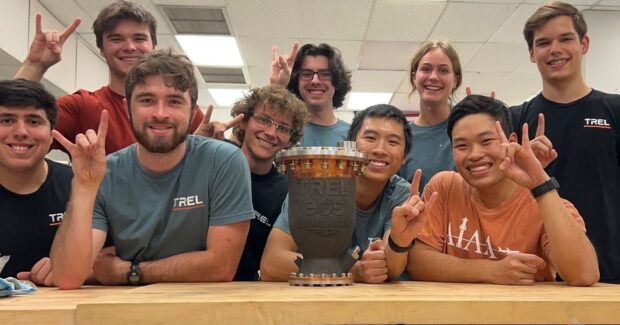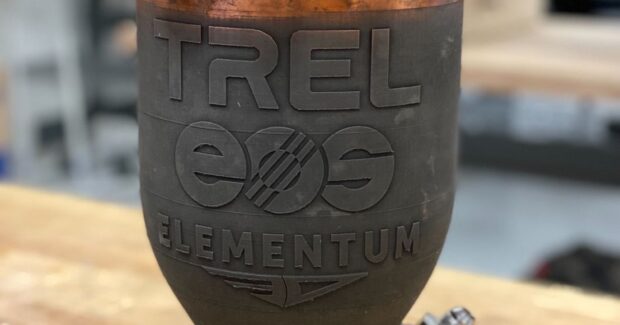Metal Additive Manufacturing is an Untapped Market Innovation
Advancements in metal 3D printing are creating cost-effective production alternatives for the applications of the future.
Posted: June 14, 2023
ADDITIVE MANUFACTURING

Most people have heard of metal additive manufacturing (AM) and have probably seen a 3D printed part or two, but what they may not realize that the ability to create complex components with computer-aided design (CAD) programs or object scans can affect production much more than at the beginning of the value chain. Product innovation, competitive advantages, speed to market and freedom of design functionality are several examples of the benefits of AM’s sophisticated production capabilities. In the current face of constant economic volatility, metal AM’s breakthrough moment might be sooner rather than later.
If we want to look into the future, we must look into the past. There has always been a fairly gradual growth of the AM industry as a whole. In 2021, the industry bounced back from pandemic lows by 19.5%, which was up from the 7.5% increase in 2020. While AM is still inching toward pre-COVID levels, the 10-year growth average of the industry stood at 27.4%.
Looking ahead, the global AM market is set to grow to more than $50 billion by 2030, while revenues tied to hardware, materials, and software from metal AM specifically will reach $9.3 billion by 2027. That means a significant portion of the AM industry’s growth is fueled by metal AM. The adoption of additive capabilities and increasing market competitiveness will only accelerate as we see more industries adopting AM over the near future.
Creating AM Momentum

A prime example of the potential for the industry to skyrocket is, well, rockets. The aerospace industry is a significant user of metal AM technology. These days, if something flies, orbits, or lands on a different terrestrial object, it is sporting AM components. These components can be small brackets on a door, minuscule internal parts, or major engine components and aerodynamic pieces that are propelling rockets into space.
A more down-to-earth example in aerospace is the high-pressure hydraulic valve block made with titanium alloy that multinational equipment manufacturer Liebherr used on the Airbus A380 aircraft. Tests on their lighter, resource-efficient and eco-friendly AM parts have laid the foundation for the design and repeatable production of other newly designed and AM-produced parts in the future.
Once an industry starts to more broadly adopt AM and reap the benefits — in this case helping to create higher-performing rocket engines that can ultimately increase the payload capacity — there is a natural flywheel effect. As more applications are being identified for AM, decision makers increasingly see that AM can reduce development times and increase the speed of innovation. By being able to print new designs overnight, the industry is almost adopting a software development approach to hardware development. This, in turn, shows the need for industries to accelerate AM adoption for everyday use and production capabilities.
Pushing Beyond Metal AM Barriers

The opportunity is here, yet metal AM experiences across other engineering functions need to meet the moment to truly unlock next-generation growth. Automotive is a huge industry for metal AM and it is swiftly starting to take hold as an important element with the OEMs and their suppliers. At GM, all new diecast tools require an AM insert, and GM has also designed and is producing more than 150 AM parts on its newest Cadillac EV. We also see Ford producing AM parts for its performance Mustangs. We can also look at BMW, which opened its Additive Manufacturing Campus outside of Munich, Germany, in 2020.
In a statement about the facility’s grand opening, campus director Jens Ertel said: “We are working hard to mature additive manufacturing fully and benefit from it as far as possible throughout the product life-cycle, from the first vehicle concept through to production, aftersales and the technology’s use in classic vehicles.”
BMW has been using incrementally more AM capabilities in its cars for more than a decade, and the opening of an entire facility was a big vote of confidence for AM in future automotive development processes.
The majority of companies that took the financial risk to explore AM should not get stuck in “pilot phase purgatory.” The costs and other major barriers to entry will gradually fall away as more private companies can confidently enter the market. The hope is that these big players will be able to help push AM use — beyond prototype parts for concept cars — to democratize opportunities for startups and smaller players.
Let’s stay in the automotive industry for a moment. How can industry leaders actively produce the spark that AM needs for across-the-board adoption and efficiency? The biggest barrier remains our habits of the present — doing things the way we have been doing them, in some cases for more than 100 years. New technologies, such as AR, AI, and AM require new training and new thinking. These new technologies are called disruptive for a reason.
Like AI and AR, AM technology is mature and there are great use cases by companies that are using it on a daily basis. But in AM’s case, the majority of software engineers, process engineers, or even those at the shop floor level of smaller suppliers must be easily enabled to execute a viable and repeatable market strategy to give them the tools they need to effectively use metal AM.
The Path for Successful AM: From Education to Innovation
Ultimately it all comes down to education. To go above and beyond the big gains the industry has already made, teaching AM functionality can reach bigger saturation levels needed in universities or technical and community colleges. If that begins to change, and we have some additive exposure in the coming years, apprenticeship programs, and increased hardware availability — for example, a small polymer desktop 3D printer in the market — then the industry would have the potential to reach a vast audience in an organic and speedy way. This is especially true if we look at what is being done at the federal level to bring manufacturing back to the United States.
The Additive Manufacturing Forward (AM Forward) compact, initially launched in May 2022, shows the government recognized that AM is a key solution to some of the challenges that we’re facing today — namely supply chain risks and delays, and declining manufacturing GDP looking to be turned around via reshoring. Though not legislation, AM Forward was convened by defense R&D nonprofit ASTRO America to bring together the country’s largest original equipment manufacturers (OEMs) like GE, Lockheed Martin, Raytheon, Siemens Energy, Honeywell and Northrup Grumman to create a groundswell of support for AM across small-to-medium sized U.S.-based suppliers and spark innovation.
Gradually, companies with the right talent that push through and adopt these technologies will benefit from the majority of economic value that can be created. It can also attract talent that typically would go into other high-profile sectors like computer science on the way to Silicon Valley. AM is a digital manufacturing technology after all.
A major part of the process is programming a build file and designing by code, and then turning that into a physical product. The software part of AM is just as important as the hardware components. With the recent exit of smart talent from the tech industry from companies like Meta, Amazon, Twitter, and Google there is an enormous chance to attract and pull innovation-forward minds into the manufacturing industry. Ultimately that means there’s immense potential for big production companies and small machine shops to gain a competitive advantage by adding those people and AM technology to their portfolio.
Metal AM and additional technologies can reach the next level once companies are willing to learn. The ones with additive minds who can guide companies through that journey and de-risk initial trial and error processes to have an impact that produces transformative results. The mindset of approaching this as a novel technology is the biggest risk, but also the biggest opportunity.
Subscribe to learn the latest in manufacturing.



















